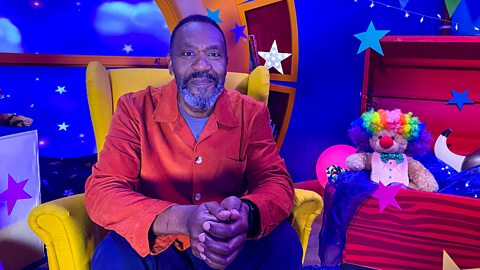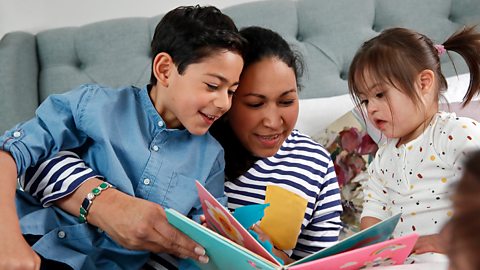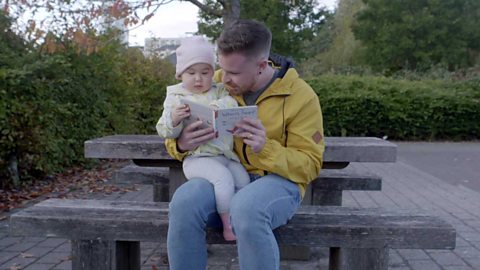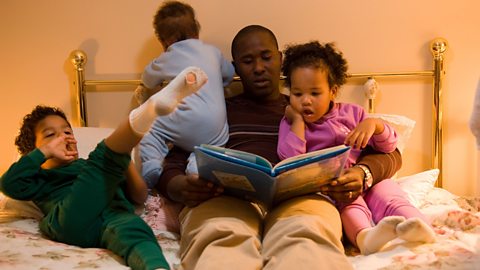From Lenny Henry to Dolly Parton, the biggest stars in the world have been queuing up to send little ones to sleep with a CBeebies Bedtime Story.
But you donât have to be on the Hollywood Walk of Fame to tell a tale to your children at bedtime.

Reading to babies and toddlers is a great bonding exercise and helps them prepare to sleep â but it also plays a part in developing their speech and language.
We spoke to speech and language therapist Janet Cooper to find out how you can make the most of your bedtime stories.
1. When to begin
It might feel strange reading a book to your newborn baby, but Janet says itâs never too early to start â in fact, you donât even need to wait for the baby to arrive.
âBabies can hear from 24 weeks in the womb. Itâs good to read out loud to them. It doesn't have to be a children's story, but they relate to that rhythm of your voice from very early on.
Theyâre never too young to start and theyâre also never too old for you to finish!
2. Timing is everything
Whether theyâre just a few days old or running round their bedroom putting off sleep, itâs important to find the right time and setting to begin your story.
âPick your moments,â said Janet. âDonât try and force storytime on a child whoâs feeling overtired, not interested or wants to be more active.â
âChoose the right moment. Downtime is a good time, thatâs why bedtime is often perfect, but there might be a time in the day where you just need to sit down together and have a quiet moment. The timing is essential.â
Itâs important to remove all distractions as well. If youâre settling down to read the adventures of the Gruffalo, you may struggle to connect with your child if the TV is on, or thereâs loud or stimulating music playing.
Make sure theyâre comfortable as well. Itâs likely that the books youâll be reading for your child will have pictures, so sit together in a position where they can clearly see them.

3. Repetition is key
While you might roll your eyes if your child picks the same book for the tenth night in a row, the repetition and familiarity is actually important for their development.
Janet says: âTheyâre building their vocabulary and starting to understand sentence structures.
âThe prediction of the narrative becomes fun, they know what happens next. Children love having a fun time with you as a parent or carer, so when they are familiar with the story, you can change the words to see if they spot it.
âThatâs great for their listening skills.â
Janet believes how you tell the story is much more important than the story itself. If a parent feels anxious about reading aloud to their child, you donât even need to bring a book to bed.
âI find some of the most successful things can be when you just make up stories. Maybe looking at a picture or making up a story thatâs a bit of fun. It doesnât always have to make sense, children just love that time with you.â
4. Keep it entertaining
So, to make sure thereâs a fun factor, what can you do? Silly voices arenât always necessary, but it can be useful to bring a rhythm to your storytelling.
âNot everybody is comfortable being animated, but the more you can put âup and downâ into your voice, the better,â said Janet.
âIf you go a little flat or monotone, you will find a childâs interest will wander off. But if youâre not comfortable, you donât have to do a performance, just a bit more emphasis.
âEven the power of things like going into a whisper can be brilliant, because childrenâs listening can be more switched on when you bring your voice down.â
If youâre comfortable trying new voices, match the characters where you can. Bring in a big, loud voice if a character is a giant, or a tiny, squeaky voice for a mouse.
Not only will it bring a story to life, but the increased interest can help children understand the words as well.

5. Make it interactive
Encourage your child to join in, where they can. Many childrenâs books have rhyming patterns and as they get older, they may start to remember or anticipate upcoming words.
Involving your child in reading the parts they remember or recognise can help to build their language skills and their confidence.
Your child will also likely have many questions about the book along the way. While an eye may be on the clock and their rapidly approaching bedtime, take time to answer them and encourage their curiosity.
You might want to involve them by asking questions too, but try to make sure it doesnât feel like a bedtime interrogation.
The choice of book is important as well, as Janet explains.
She said: âFrom a speech and language therapy point of view, make sure the language is at the right level for the child. If youâre talking at much too high a level, they will lose interest much too quickly, so make sure youâre simplifying sentences to their level.â
If your child isnât interested at the time, or becomes fed up, itâs fine to end it midway. Janet says the experience should be a positive one and where possible, led by the child.
âMake sure youâve chosen a book you both enjoy at a time you can both enjoy it. If itâs not fun for you, itâs probably not fun for the child either.
âThe more fun youâre having, the more fun your child will have reading it with you. Itâs more about the interaction together than the actual story telling.â






